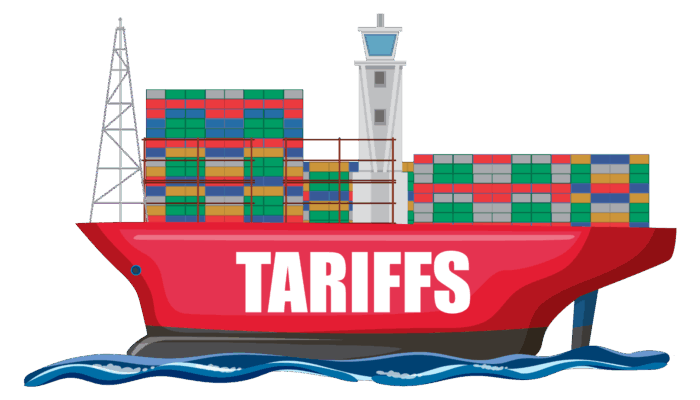Take one glance at the schedule for the fall French fashion week and you’ll immediately recognize the impact of the coronavirus. Most, though not all, of the runway presentations were digital. Even though some stalwart fashion houses like Chanel and Louis Vuitton hosted live events, the effect of the global pandemic has been felt in the world of fashion in ways that are expected to reshape the industry. From a reduction in demand for seasonal looks to the rise of digital shopping, the fashion industry must reshape many of its fundamental business practices if it wants to thrive in the new normal.
Cautious consumption
Ever since WWII, global fashion has operated on a seasonal basis, releasing unique looks for each change in the weather. This perspective has conditioned shoppers to purchase for the upcoming season and push older outfits to the back of the closet (or second-hand stores) once the season changes.
All of that has changed in 2020, with high-end customers focusing instead on classic looks rather than that season’s trend. According to a McKinsey report on “The State of Fashion 2020: Coronavirus Update,”
Luxury consumers are also likely to, at least for the time being, adopt the “fewer, better things” mantra that environmentalists have been advocating over the past decade. While this could spur increased activity in the second-hand and rental channels once fear around the virus contagion subsides, it also means that many consumers will be looking for so-called “investment” pieces—minimalist, last-forever items—that feel more responsible given the state of the world. “Call it cautious consumption,” said Mario Ortelli, managing partner of luxury advisors Ortelli & Co. “It will take more to justify a purchase.”
More permanent collections
“I want to create clothes that you want to keep for a long time because the quality, the cut and the design are there. What’s more ecological than the timeless?”
– Agnès Troublé, Creative Director, Agnes B
A natural progression from the focus on the classics is that fashion brands are leaning into so-called “permanent” collections. Rather than creating hundreds of new styles each season, they have a core group of carry over products, but still add new reference styles into their seasonal collections. The positive impact from a production and supply chain perspective—as well as for managing inventory—is clear: it reduces the effort required to release new collections each season.
This benefits retailers as well, as they don’t risk overbuying in the same way that was common with seasonal collections. In today’s uncertain market, this means retailers can invest less in refreshing inventory and not have to worry about discounting overbought fashions.
However, underbuying can have challenges. Retailers may not carry the same depth of sizes and colors they have in the past. To combat this, we’re seeing more collaboration between buyers and brands, whereby brands are drop-shipping products directly to the customer. This approach keeps loyal customers happy while reducing the need for investment in hard inventory.
In the absence of a quarterly total style refresh, brands can focus on manufacturing and transportation efficiencies. For some this includes moving their production facilities closer to the supply chain. Other focus areas include strengthening existing customer relations, and acquiring new customers, especially through digital channels.
Less Overproduction
The fashion industry has been under the gun for the past several years for its unsustainable production and distribution processes. Aside from the vast amounts of natural resources needed to produce garments, brands have overproduced clothing with each change of the seasons to meet retailers’ potential demand. In reality, many of these products end up steeply discounted at outlet stores once that particular season has passed. This literally cheapens the brand. What’s more, overproduction results in excess manufacturing and transportation fees that brands can ill afford with the global slowdown in apparel sales.
The shift to digital
Even though e-commerce has been eating into market share for apparel for many years, luxury consumers, in particular, have continued to value the in-store experience. Between top tier clienteling services and the experience of touching and trying on clothes, many luxury shoppers have remained loyal to in-store shopping—until the pandemic. According to the same McKinsey study, this will cause a shift from bricks-and-mortar to digital:
Self-isolation has also forced another change in behavior that is likely to remain once the dust settles: more shopping online…While e-commerce channels are likely to see a boost—as more consumers get comfortable with making high-price purchases online as they remain hesitant to visit crowded public spaces—other channels, like multi-brand retail, are primed for contraction even after lockdowns are lifted. Some luxury stores will not survive the lockdown, as constrained cash flow will make it impossible for them to pay their creditors and clients.
These changes in behavior will likely see a shift in digital to more immersive shopping experiences, as well as leveraging underperforming stores as distribution centers or “dark stores.” The initial explorations of digital clienteling we’ve seen over the past few years will gain steam as brands struggle to maintain the human connection with their customers.
The case for connected inventory
As omnichannel shopping is becoming the new norm, consumer and retail companies must be ready to deliver fast, impeccable omnichannel service.
– Future of retail operations: Winning in a digital era, McKinsey, January 2020
To succeed in the digital realm, retailers and brands will need to provide a seamless omnichannel shopping experience. They’ll need to know what stock they have available, and where, at all times. This is particularly important now that buyers are being more cautious. How do you maintain stock availability when you carry less inventory? The McKinsey report, suggests that supply chain agility and connected inventory are key.
In supply chain, we identify the measures successful companies have taken, which include fundamentally transforming their supply chain to enable a true omnichannel experience, taking more agile approaches when designing their supply chain network, building new capabilities, and adjusting their operating model. We take a look at how retailers can keep up with customer expectations as omnichannel shopping becomes the new normal—including building and maintaining a connected inventory strategy, which increases transparency and access to stock wherever it sits in the supply chain to better fulfill customer needs.
In short, retailers and brands need to find new ways to work together. They need to share inventory data across the supply chain, so they can reduce their overall inventory risk yet increase product availability. That way retailers can offer an extended range of products for sale across channels, confident that their suppliers can drop ship them if needed.
The one thread that runs through all of these seismic changes is the importance of accurate inventory visibility. Retailers and brands that don’t know where their products are in real time, what is available to sell, and where product is moving fastest, will not be able to survive. When you consider the complicated dance that happens between manufacturers, carriers, stores and customers, it’s clear that the successful retailers and brands will be the ones that are in full control of their inventory, at all times, in real time.




